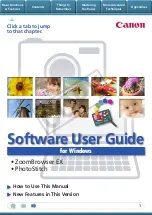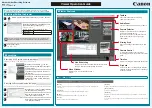Summary of Contents for NetBackupTM 5.0
Page 1: ...N102408 VERITAS NetBackup 5 0 Media Manager System Administrator s Guide for Windows ...
Page 4: ...iv NetBackup Media Manager System Administrator s Guide for Windows ...
Page 24: ...xxiv NetBackup Media Manager System Administrator s Guide for Windows ...
Page 34: ...Conventions xxxiv NetBackup Media Manager System Administrator s Guide for Windows ...
Page 50: ...Security Issues 16 NetBackup Media Manager System Administrator s Guide for Windows ...
Page 184: ...Recycling Volumes 150 NetBackup Media Manager System Administrator s Guide for Windows ...
Page 276: ...Denying Requests 242 NetBackup Media Manager System Administrator s Guide for Windows ...
Page 428: ...394 NetBackup Media Manager System Administrator s Guide for Windows ...



































